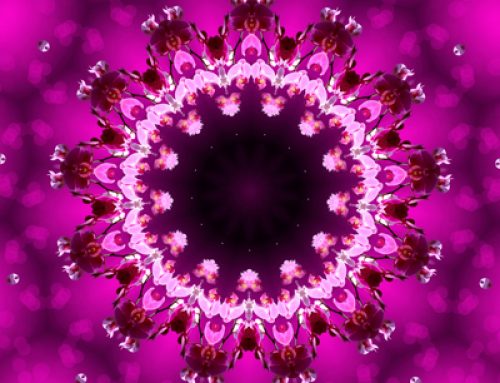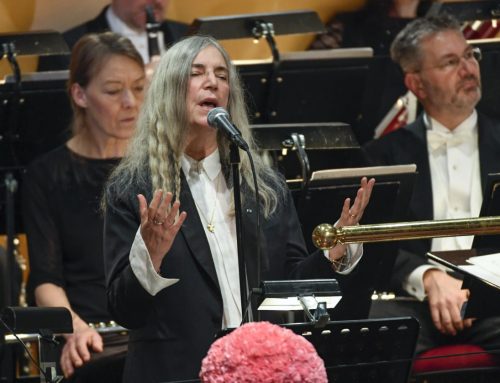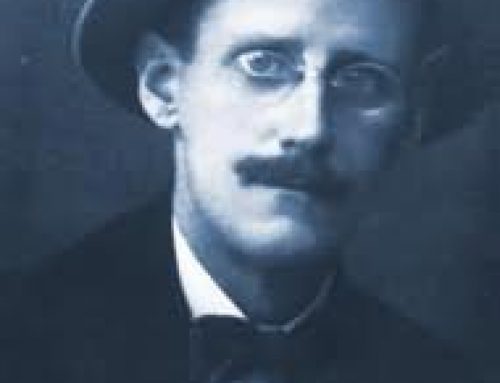Homeric link: Hades/Hadès
Scene: The Graveyard/la cimetière
Hour: 11 a.m./11 heures
Organ: Heart/coeur
Art: Religion/religion
Colors: White, Black/blanc, noir
Symbol: Caretaker/gardien
With this visit to the underworld – Glasnevin Cemetery, the heart of Dublin, the city of the dead – Joyce concludes his second triad of episodes. Here the seemingly separate movements of Stephen and Bloom will end; from now on, their paths begin to cross more clearly and they begin to function together more obviously.
With three fellow-mourners, Bloom is off to Patrick (Paddy) Dignam’s funeral in a grungy, tattered carriage. His companions are Martin Cunningham, Mr. Power and Simon Dedalus, the father of Stephen. Cunningham and Power (along with several of the other characters in this episode) appeared in Joyce’s first book, Dubliners, while Simon Dedalus is well known to readers of his second, Portrait of the Artist as a Young Man. But Simon is older now, his wife has died, he has become estranged somewhat from Stephen, his oldest son, and he is perhaps now rougher and more bitter, although he is as ever displaying his acerbic wit and clever tongue.
The Homeric link is with Odysseus’s visit to Hades, where Homer’s hero converses with the dead, learning about his return home and the fate of his men from Tiresias’s prophecy. Some of the parallels are obvious: the four rivers of the underworld and Dublin’s Dodder and Liffey Rivers and Grand and Royal Canals; Cunningham and Sisyphus, Dignam and Elpenor, Menton and Ajax; the caretaker with his keys and Hades, etc. And of course both Glasnevin and the underworld are the home of the dead, visited by the living “tourists,” who are also of course its future residents.
The symbol of the episode is the heart, and references to this organ abound – Bloom thinking practically of the heart as a pump that stops working, the Sacred Heart, bleeding hearts, a heart of gold, etc. Death, too, is at the heart of life, and the cemetery is in the heart of the city. Bloom’s role in the greater book is that of body, the concrete, as opposed to Stephen’s ethereal intellect, and he embodies feeling, love and compassion – attributes of the heart. As the episode unfolds, we become more familiar with the heart of Bloom, the one Dubliner here with an open heart, a broken heart that is thus a whole heart.
Having left Bloom in his bath, the living corpus of man-divine and his languid “flower” afloat in the fragrant waters, we move now to the corpse, Paddy Dignam, dead and cold in his coffin, “potted meat,” Bloom thinks (remember Plumtree’s Potted Meat).
Bloom does not shy before the (living) reality of death, neither sentimentalizing nor conceptualizing it. “Once you are dead you are dead,” he thinks. In his ruminations, he explores the earthy anatomy of death, the rich and vivid dissolution of the body into the earth. This contrasts with the empty (dead) ceremony in the mortuary chapel, where a toad-like priest reads the service out of a book “with a fluent croak.” In his silent monologue, Bloom follows the stale, rote ritual, observing, “It’s all written down: he has to do it.”
Religion is the “art” of this episode, but it is not religion as a practice of transcendent spirituality or of beautiful and lofty theology. For Bloom, it is the religion of doctrines, churches, priests, conventional ritual and ceremony, empty beliefs.
En route to the funeral, Bloom and his companions ride in the carriage just behind the one bearing Dignam’s corpse. Death leads the living. Bloom entered the carriage, Joyce writes, “and sat in the vacant place.” He is No-man sitting in that place where no-man is. Crossing the city, they pass many Dubliners, most notably Stephen (heading to the beach; it is 11 a.m.), “a lithe young man, clad in mourning, a wide hat,” whom Bloom spots and points out to Simon, and then Blazes Boylan, Molly’s new lover, the sight of whom Bloom seeks to avoid by assiduously studying his nails. “Worst man in Dublin,” Bloom thinks. The carriage bumps along, at one point a torn-up road revealing the underworld, realm of the dead, ever-present just below the surface of life. “In the midst of death we are in life. Both ends meet,” thinks Bloom.
The circle is Joyce’s geometrical symbol for this episode: Seeming opposites are in fact one, or, as the Italian philosopher Giordano Bruno saw it, all contraries are ultimately coincident. The numerous triads of Ulysses reflect this truth – the relationship between the episodes, in trios, but also the relationship between the trios of episodes or the relations in the Stephen/Bloom/Molly triad. Joyce considered Bruno, one of the principal influences upon his life and work, to be “the father of what is called modern philosophy.” What so inspired Joyce in Bruno was what Richard Ellmann calls the philosopher’s “mystical faith in interconnection as a world-principle.” This is akin to the fundamental Buddhist notion of interdependence. Likewise, as Ellmann writes, “Bruno’s contraries coincide to confirm their mutual participation in Being, ‘the foundation of all kinds and of forms.’ “ Joyce’s Ulysses is perhaps literature’s greatest testimony to this Being, a magnificent tribute to the infinite circle of One and All in perpetual motion: Nothing and no one stands a-lone; everything and everyone is all-one.
As illustration of this, a number of motifs from previous episodes reappear here – hats, keys, tea, soap, drowning, emerging, father and son – and some others are introduced. Among them is the mysterious man in the brown macintosh, who is the 13th mourner at the grave but whom no one seems to know. He then disappears, but he will reappear throughout Ulysses, still an enigma for Bloom and for readers until the end.
At the episode’s end, Bloom has an unfortunate encounter with the prominent solicitor Mr. Menton, telling the great man that his hat is dented. Menton, whom Bloom beat in a party bowling game some years ago (“…I sailed inside him. Pure fluke of mine: the bias,” Bloom recalls), is not amused, and snubs Bloom. A dented hat can be seen to symbolize dented virility. Earlier, speaking to one of the other mourners, Menton praised Molly as “a finelooking woman” and wondered why she married “a coon” like Bloom. We learn later that Menton was another of Molly’s lovers, in fact getting “inside” Bloom’s wife.
The father-son motif is growing more evident. Bloom thinks of his dead son, Rudy, and of his dead father, a suicide. The mourners discuss a story about Ruben J. Dodd and his son, who attempted suicide but was saved. Bloom sees Stephen (as the carriage passes him, but also figuratively) although his father, Simon, does not.
Although Bloom meditates at length on death while in the garden of the dead, life is never far away. Passing through the city in the thralls of its ordinary life, Bloom and the other mourners engage in casual chatter, and the funeral procession meets a herd of cattle, symbolic of life. Bloom is not yet among the dead, literally and figuratively; he not only is of this life, he is life. “Plenty to see and hear and feel yet,” he thinks, ever the sensualist. “Feel live warm beings near you. Let them sleep in their maggoty beds. They are not going to get me this innings. Warm beds: warm fullblooded life.”
Amy Hollowell Sensei











i love this story
Seeming opposites are in fact one, or, as the Italian philosopher Giordano Bruno saw it, all contraries are ultimately coincident.
Very interesting
Or the still point where opposites are the same / or both sides of the same coin. Or the point where we see foreground and background in one level.
cfr. we don’t realy see form if we don’t see space/emptyness at the same time. (2 levels)
I don’t know if what Bruno says is the same though? for it is very precise???
More like fate/destiny/lot is the same as coincidence
Or maybe even bigger: all the precise being coincidence…
Where does Trungpa talks/writes about the white poodle? This intrests me most, since this is the very hart of things…
We cannot exist unless we can not exist…
As there is no white poodle – since things are empty? = since everything is full, one pure energy –
at the same time there is no white poodle and though at the same time their is the "poodelischness" of the poodle…
the essence we cannot see with our eyes, we see with our hart – St Exupery
Yet at the same time we? see it? with our eyes / their is "the seeing with our eyes"
Episode 4 – Home management – limiting space by defining this as mine.
I was watching the birds flying from garden to garden and i experienced how i confine/limit myself by defining this garden as mine.
how I limit myself defining ‘I was was watching’ as mine….
in my childhood their was a christian song in church
I have always remembered it becous of the scary text, the horrible melody, and the way they sang it out of tune…
…with death in our blood, standing up to live…
the nondual = the dual
the nondual contains the dual
"Death is at the heart of life"
Amy, you wrote something like "how can a being without a fixed existence be limited by space and time?"
Episode 4 – Home management – limiting space by defining this as mine.
I was watching the birds flying from garden to garden and i experienced how i confine/limit myself by defining this garden as mine.
Also limiting life. "There’s work to be done!"
Episode 5 – Addictions – mind numbingers – limiting my mind by defining what I want to experience. Also limiting death.
Limitless death is definitely what I don’t want to experience. Going down to Hades to talk to dead people!!
Life is death because it is life.
Watched a blackbird pull a worm out of the grass and swallow it.
Scary.
"Seeming opposites are in fact one, or, as the Italian philosopher Giordano Bruno saw it, all contraries are ultimately coincident."
Is this like trungpa’s white poodle – ? –
Trungpa –
"objects are not really there. At the same time they are actually there…………..We cannot hold on to any of our sense perceptions or experiences……………Things are there because they are not there – otherwise they could not exist. They are there because they are dependent on their nonexistence. Things cannot exist unless they can not-exist.
A white poodle crossing the road is not a white poodle because her whiteness depends on blackness. Therefore the white poodle is a white poodle because the whiteness depends on blackness. A white poodle crossing the road is definitely a white poodle because she is not a black poodle. At the same time there is no road………….."